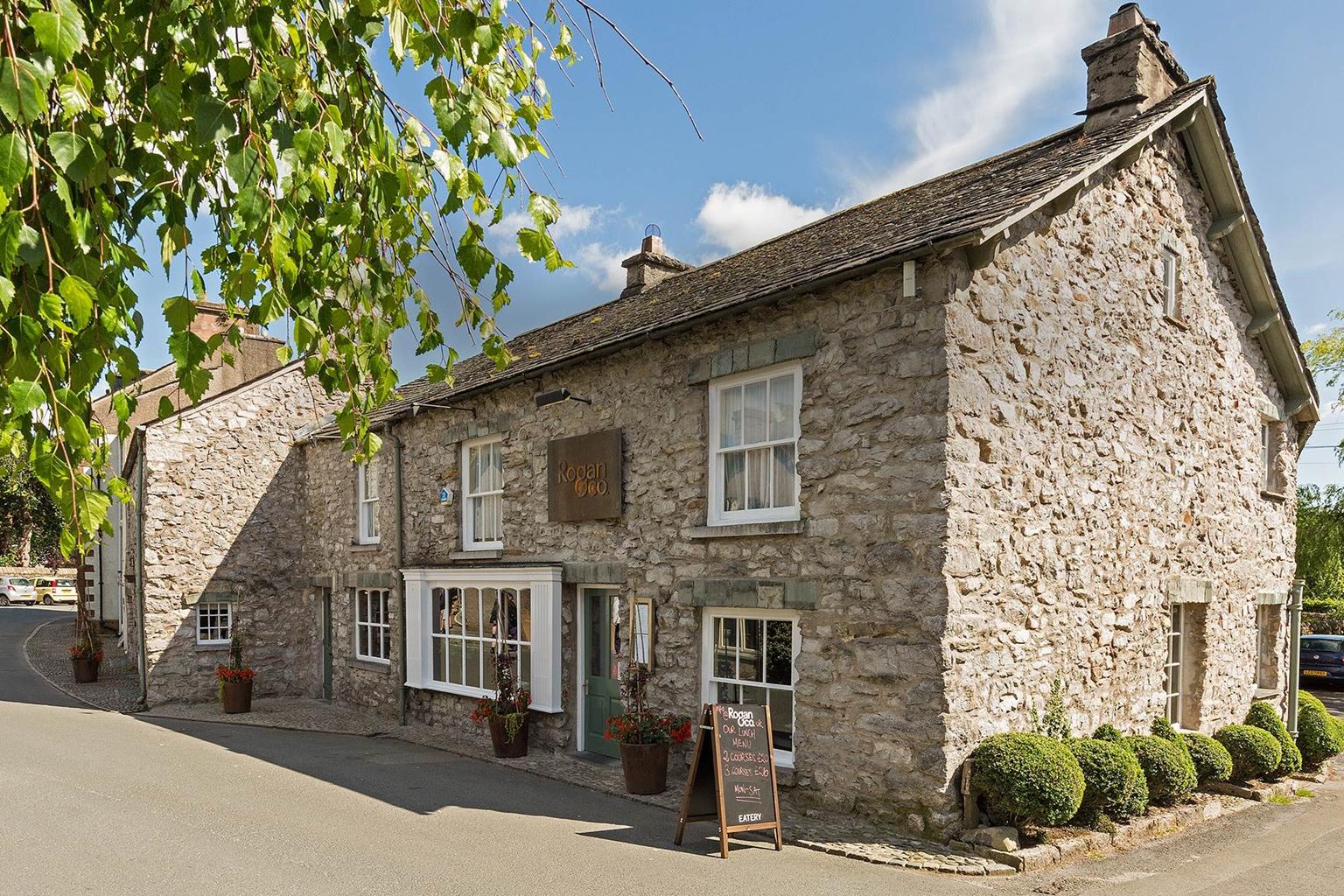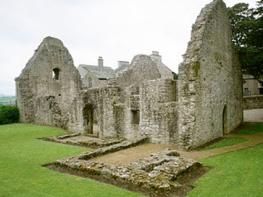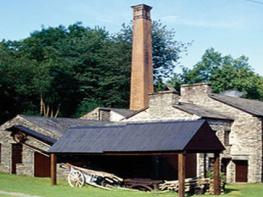Silverdale is a superb family holiday destination, enveloped in wooded countryside and…
High Arnside Knott

This tree-clad knoll offers astonishing views and a special ambience.
5.5 miles (8.8kms)
About the walk
Rising from the Kent estuary to form a defiant outpost of resilient limestone, the heights of Arnside Knott are part of the Arnside-Silverdale Area of Outstanding Natural Beauty. Bedecked with magnificent oak and mixed woods, rocky scree, hummocky grass, scattered bushes and the airy delights of steep open hillside, the hills also have the salty tang of the Kent Estuary, which floods out into Morecambe Bay. Above the trees, to the north, the panoramic view of the high fells of Lakeland is spectacular. There are many spots where you can enjoy this view, but none better than the toposcope (view indicator) below and west of the summit.
On the sands
The little town of Arnside, with its station, viaduct crossing the estuary, and elegant white limestone buildings, exudes a quiet feeling of Victorian affluence. Local children used to be thrilled by the tales of the Arnside Bore, a wave that runs in at the front of a rising tide; it still presents a dramatic sight but also great danger out on the sands, as the tide floods in at a gallop. A warning siren is sounded at the start of an incoming tide – heed its call.
On selected days every summer, Arnside is also the starting point for the famous Cross-Bay Walks. Usually hundreds take part, following the guide on a carefully planned course across the sands of Morecambe Bay, wading through channels to come ashore at Kents Bank for the 10-minute return journey by train. The ever-shifting sands mean that the route is never exactly the same twice. It’s all done for pleasure now, but before the days of roads and railways this was a regular route of travel. The dangers were such that the office of Queen’s Guide to the Sands was created in 1548. Cedric Robinson died in Nov 2021, having retired in 2019 after 56 years. The current holder of the King’s Guide to the Sands is Michael Wilson.
Walk directions
Walk along the promenade. At the end of the surfaced road, by the entrance to Ashmeadow House, a walkway to the right continues above the sands. Continue along the path until it joins the foreshore. Continuing beneath Grubbins Wood, the path crosses mud, pebbles and a polished limestone outcrop before it rounds a little headland to join a track. Depending on the tide, it may seem attractive to walk along the sands on the foreshore. This isn’t recommended as quicksands are prevalent here and are undetectable until you sink.
Turn right to New Barns Caravan Park; before the buildings, bear right past a barrier, initially following a clear track and then along the foreshore. Round Frith Wood, following the path beneath the trees, high on the pebble beach. Keep on to rocky Blackstone Point. You may have to wait to round it if the tide is high.
Having rounded Blackstone Point, enter the little bay of White Creek. Keep to the back of the little bay, past a shingle bank and a limestone outcrop with two benches on top of it. About 150yds (137m) beyond this outcrop, a break in the low cliffs allows you to clamber up into the trees and join a reasonably clear path. Turn right on this – along the coastal fringe of the woods of Arnside Park.
Round Park Point and continue along the edge. Eventually a stone wall slants up the slope. Go up to the left to join another track in the woods, signed ‘Far Arnside, Silverdale’. Go right and continue through the gate, soon entering a caravan site. Take the left, higher road and then keep straight on, along Pebble Row and Cliff Drive, to exit the site. Continue to a squeeze stile and gate on the left, signed ‘Public Footpath Arnside via The Knott’. Follow the fenced path to Hollins Farm and exit by a stile.
Go left through two gates, then bear right, following the path up the hillside of Heathwaite. A gate leads through the wall and out onto a track in the woods. Go straight across and ascend the stony track, curving up a steep section. At a fork bear left, soon reaching a little gate. Once through this, bear right to climb steeply to the toposcope. Follow the path through a gate and back into the wood. Keep to the clearest path and then turn left at a junction. Continue up to a bench near the summit of Arnside Knott. Paths on the right lead to the trig point, hidden by trees.
Bear left from the bench and descend to a gate in a wall. Follow a wide green path down the open field of Red Hills, bearing right to the bottom corner of the field where a gate enters the woods. Descend the track through the woods to a road. Turn left; soon the road doubles back and descends to a larger road. Go right along this to Silverdale Road. Turn left down to the seafront.
Additional information
Foreshore (tide permitting), paths, some surfaced road, 1 stile
Estuary and foreshore, mixed woods, limestone knoll
Generally a good walk for energetic dogs
OS Explorer OL7 The English Lakes (SE)
Along Promenade or in Arnside Beach car park near the viaduct
On Lower Promenade
Parts of foreshore impassable at high tide, beware of rapidly incoming tides and quicksand; some unguarded little crags
WALKING IN SAFETY
Read our tips to look after yourself and the environment when following this walk.
Find out more
Also in the area
About the area
Discover Cumbria
Cumbria's rugged yet beautiful landscape is best known for the Lake District National Park that sits within its boundaries. It’s famous for Lake Windermere, England’s largest lake, and Derwent Water, ‘Queen of the English Lakes'. This beautiful countryside once inspired William Wordsworth and his home, Dove Cottage, in Grasmere is a popular museum. Another place of literary pilgrimage is Hill Top, home of Beatrix Potter, located near Windermere. Tom Kitten, Samuel Whiskers and Jemima Puddleduck were all created here.
Much of Cumbria is often overlooked in favour of the Lake Distirct. In the south, the Lune Valley remains as lovely as it was when Turner painted it. The coast is also a secret gem. With its wide cobbled streets, spacious green and views of the Solway Firth, Silloth is a fine Victorian seaside resort. Other towns along this coastline include Whitehaven, Workington and Maryport. Carlisle is well worth a look – once a Roman camp, its red-brick cathedral dates back to the early 12th century and its 11th-century castle was built by William Rufus.
Nearby stays
Restaurants and Pubs
Nearby experiences
Recommended things to do
Why choose Rated Trips?
Your trusted guide to rated places across the UK
The best coverage
Discover more than 15,000 professionally rated places to stay, eat and visit from across the UK and Ireland.
Quality assured
Choose a place to stay safe in the knowledge that it has been expertly assessed by trained assessors.
Plan your next trip
Search by location or the type of place you're visiting to find your next ideal holiday experience.
Travel inspiration
Read our articles, city guides and recommended things to do for inspiration. We're here to help you explore the UK.













